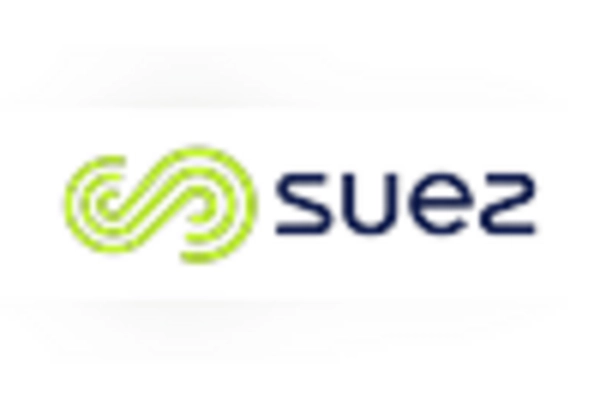The Ion Exchange Membrane Market is a sector characterized by technological advancements, diverse applications, and robust competition. The market primarily serves industries such as water treatment, chemicals, pharmaceuticals, and food processing, where ion exchange membranes play a critical role in processes like separation, purification, and filtration.
Companies operating in this sphere continuously innovate to enhance the performance attributes of their membranes, catering to varying customer needs such as durability, efficiency, and cost-effectiveness.
The competitive landscape features a mix of established brands and emerging players, driving a trend toward consolidation through mergers and acquisitions as companies seek to broaden their product offerings and market reach.
Understanding the market dynamics and the strategic maneuvers of key players is essential for stakeholders aiming to maintain a competitive edge in this rapidly evolving environment. GKN has carved a significant niche in the Ion Exchange Membrane Market, focusing on the development and supply of high-performance membranes that cater to various industrial applications.
The company has leveraged its extensive research and development capabilities to deliver innovative membrane solutions that demonstrate superior ion selectivity and longevity. GKN is recognized for its strong manufacturing capabilities and commitment to quality, enabling it to produce membranes that not only meet but exceed industry standards.
Its strategic partnerships with industry leaders and a robust distribution network have further bolstered GKN's market presence, ensuring that its products reach a wide range of customers globally. With a dedicated focus on sustainability, GKN is also investing in eco-friendly membrane technologies, positioning itself favorably as industries shift towards greener alternatives.
Pall Corporation holds a prominent position in the Ion Exchange Membrane Market, known for its focus on advanced filtration and separation technologies. The company's ion exchange membranes are highly regarded for their reliability and performance, making them a preferred choice across multiple sectors.
Pall Corporation's strength lies in its customer-centric approach, where it works closely with clients to understand their specific challenges and tailor solutions accordingly.
With a strong global footprint, Pall Corporation has established a wide-reaching presence, supported by an extensive portfolio of products that cater to diverse applications in water filtration, pharmaceutical manufacturing, and chemical processing.
Its ongoing commitment to innovation allows Pall Corporation to stay ahead of emerging trends, ensuring that its offerings remain relevant and effective in a competitive marketplace. This dedicated innovation strategy, coupled with strong brand loyalty, positions Pall Corporation as a formidable player in the ion exchange membrane Market segment.


















Leave a Comment